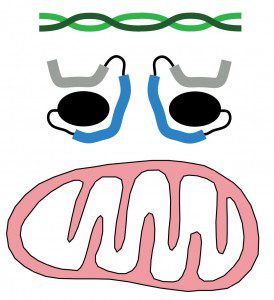

The ‘eyebrow’ is a molecule of double-stranded RNA, typically produced in some virus-infected cells. These RNAs are detected in the cell cytoplasm by two proteins, RIG-I and MDA5 (the ‘eyes’). When these innate sensor proteins bind RNA, they trigger a signal transduction cascade that ultimately leads to activation of transcription proteins and induction of interferon mRNA synthesis. This signal transduction cascade requires interaction of RIG-I and MDA5 with a protein called IPS-1 that is located in the outer membrane of the mitochondrion (the mouth and teeth).
We’ll certainly cover the topic of innate sensing of viral RNA in more detail in future posts. For now, have a laugh and a good weekend.
Who said that learning science can’t be enjoyable?
